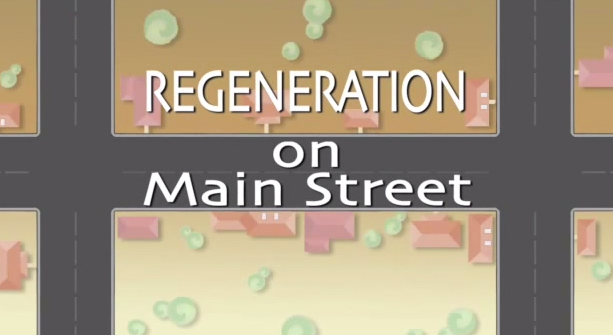When one thinks of a lively downtown, one tends to think of old architecture, the hustle and bustle of people, and large storefront windows with unique items on display. It’s that liveliness that Humboldt is trying to bring to its own downtown, so it’s only natural that the city has joined Saskatchewan’s Main Streets program.
“We’re just at the starting stage because the program was just introduced,” said Roy Hardy, city manager for Humboldt. “We’re going to be putting together the process and getting together some people that own shops downtown, visit downtown, and live downtown.”
The Main Street program is a sponsored curriculum implemented by the provincial government to provide communities with the tools and resources to revitalize their downtowns. There are two levels to the program: affiliate and accredited.
Affiliate communities are just starting to learn about the program and are beginning to get a plan together for what direction they want to head in for revitalization. Accredited communities already have a plan and a committee together and are ready to start taking some serious steps. At this point, Humboldt is only at the affiliate level.
“I think that we’ll apply to accredited level when we have developed our plan locally,” said Hardy. “We’ll be identifying the process of what people would like to see us do revitalize. There are already some basic programs in terms of the Main Streets program, which will be good once we get a steering committee together.”
While affiliate members have access to some resources, accredited ones can access the full range of tools at their disposal, plus can compete for financial aid from a $25,000 fund pool. Due to this limitation of resources, only two communities can be chosen per year for the accredited level.
“The majority of the money that will be made available will be accessed through the Main Street grant fund, which will be a grant program that communities can apply to to help support local projects that they’re doing as part of their Main Street program,” said Bruce Dawson, manager of the Historic Places Program. “With the funding, there are thee areas that it will support: heritage conservation, enhancement, and capacity building.”
While heritage conservation is fairly obvious, enhancement refers to anything that “improves the visitor experience,” which can include something as big as event staging to something as small as street landscaping. Capacity building refers to enhancing people’s knowledge and skills regarding the Main Street Approach.
The Main Street Approach is the core of the program and is built on four pillars: community organization, economic restructuring, design/heritage conservation, and promotion.
To break it down simply, community organization involves bringing together not just merchants, but also community residents and Main Street stakeholders. Economic restructuring means strengthening the existing business models while also diversifying and expanding the local economy to cover industry gaps (e.g., encouraging more arts and entertainment businesses if there are none). Promotion means making both residents and visitors of everything the new and improved downtown has to offer.
“This program is not a quick fix, it’s an incremental growth to community revitalization,” said Dawson. “You won’t see dramatic changes in months. Sometimes communities get discouraged because they want to see things move faster, but it can only grow so fast once things get integrated. You’ll start to see the investments in downtown, the economy growing, and jobs start coming up.”
The government has already seen some of the results of program with their first four pilot communities. According to Dawson, some of the commonalities for success was usually seen when they started with a good community plan and a focused approach. Rather than set the priorities and focus only on those, they took every aspect of their downtown into consideration and let priorities evolve out of that planning process.
Although it’s still in the early stages for Humboldt, Hardy seemed to echo those sentiments.
“It’s important to keep an open mind when you’re looking at what your priorities are,” he said. “The issue is that there are a lot of great assets in downtown. There’s a good structure and a good set of bones out there. It’s just a matter of looking at all the aspects.”
Humboldt may only be an affiliate member, but the city is still fortunate that it’s got a lot of the bare bones already in place. The Business Improvement District (BID) has already been working towards the Main Street goal even before it was an affiliate and has already sponsored projects such as Streetfest.
“The Main Street program really aligns with a lot of the priorities that the BID has,” said Jennifer Hoesgen on behalf of the BID. “Streetfest really showed the power of how an event can bring people right to the downtown, bring merchants together, and (cause) excitement for the downtown.”
Regardless of the potential, it’s still too early to say where Humboldt is headed and what changes will be in store for the community. All that’s certain is that it’ll likely be a few years before the community sees any massive differences, so residents and merchants will have to practice patience.
“I think the issue is that to run a good program, you’re going to have to focus on all of the pillars,” said Hardy, referencing the Main Street Approach. “Obviously, we’re a long ways ahead of other communities by having the our Humboldt plan. We have the cultural base and activity already in place.”




